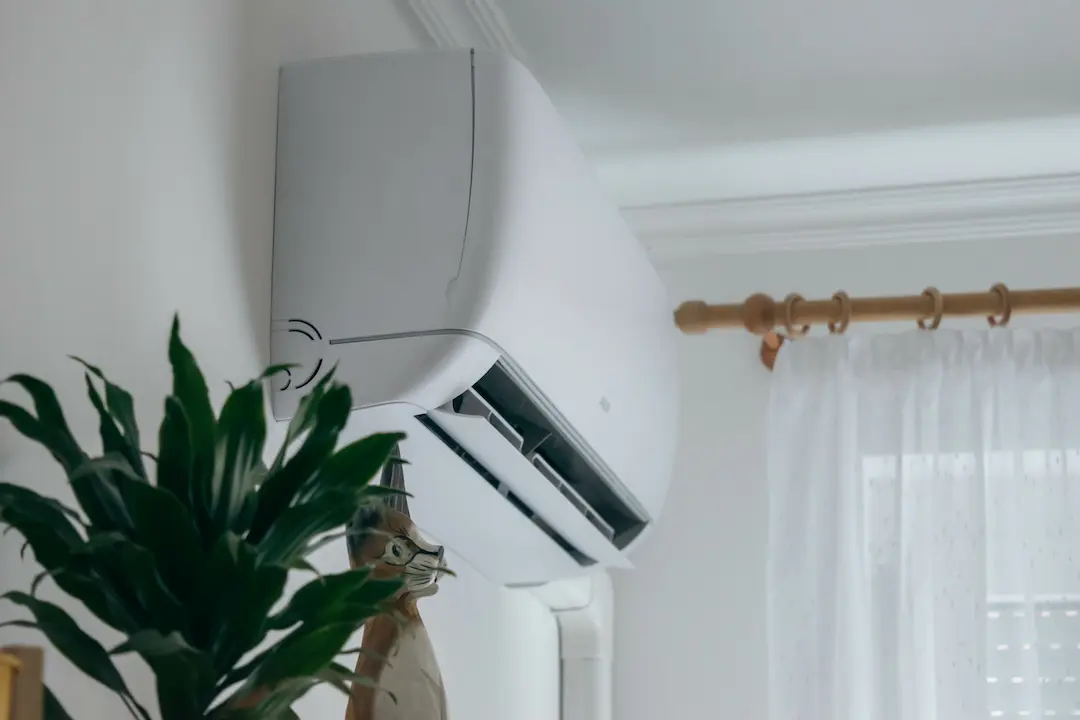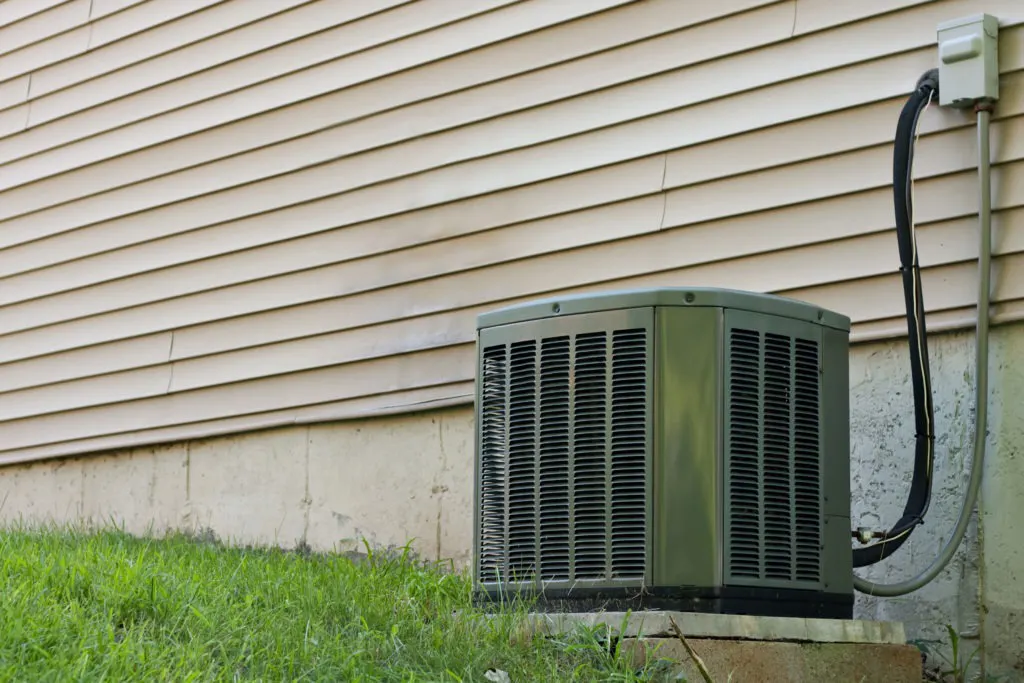March 23, 2023
Mini Split vs Central Air: Which is the Best Air Conditioning System for Your Home?

When it comes to keeping your home cool and comfortable, choosing the right air conditioning system is essential. Two of the most popular options available on the market today are mini split and central air conditioning systems. While both options have their own benefits and drawbacks, it can be difficult to determine which one is best suited for your home.
Our Raleigh air conditioning installation company is helping homeowners compare mini split vs central air conditioning systems. From understanding their differences in terms of cost, energy efficiency, installation, and maintenance, we hope to guide you in having a clearer understanding of which cooling system is the best fit for your home.
What Is A Mini Split Air Conditioner

A mini split air conditioner, also known as a ductless air conditioning system, is a type of air conditioner that does not require ductwork to cool a room or space. Instead, it consists of two main components: an outdoor compressor/condenser unit and an indoor air-handling unit.
Mini split air conditioners are ideal for homes or rooms where traditional central air conditioning systems with ductwork may not be feasible, such as in older homes without existing ducts or in rooms that require additional cooling but are too small to justify the installation of a central AC system.
How Does a Mini-Split System Work?
A mini split air conditioning system works by drawing in warm air from a room, passing it over the evaporator coil, and blowing the cooled air back into the room. It’s a highly efficient and effective way to cool individual rooms or spaces without the need for ductwork.
Here’s a breakdown of how a ductless mini-split system works:
- The outdoor compressor/condenser unit compresses and circulates refrigerant in the system.
- The indoor air-handling unit contains an evaporator coil that cools the air as it passes over it.
- The indoor unit blows cooled air into the room through a fan.
- The conduit, which connects the outdoor and indoor units, contains the refrigerant tubing, power cable, and condensate drain. The refrigerant tubing carries the refrigerant between the two units.
- The mini split air conditioning system is controlled by a thermostat or remote control, allowing you to adjust the temperature and fan speed.
Advantages of Mini-Split Systems
Ductless mini-splits have become increasingly popular over the years due to their many advantages over traditional central air conditioner systems.
Energy efficiency
Unlike traditional ducted air conditioning systems, which can lose a significant amount of energy through ductwork, mini-split systems do not require ducts, making them more energy-efficient. Mini split systems also use inverter technology, which allows them to adjust their cooling output to match the needs of the room, reducing energy waste.
Easy installation
Unlike central air conditioning units that require extensive ductwork, mini-split systems only require a small hole in the wall for the conduit to pass through. This means that installation is typically quick and easy, and can be completed in a matter of hours, as opposed to days or weeks with a centrally controlled AC system.
Zoning capabilities
Mini split systems also offer zoning capabilities, which means that each indoor air-handling unit’s temperature settings can be controlled independently, allowing you to cool specific rooms or zones in your home without wasting energy on areas that don’t require cooling.
Disadvantages of Mini-Split Systems
While mini-split air conditioning systems have many advantages over traditional central air conditioning systems, there are also a few potential disadvantages to consider.
Higher upfront cost
The cost of a mini-split ductless AC system can be significantly higher, especially when factoring in the cost of professional installation. However, the energy savings that come along with lower monthly utility bills as well as the long-term cost benefits of using a mini-split system may offset the initial cost over time.
Less powerful
While mini-split systems are designed to cool individual rooms or spaces, they may not be sufficient for larger homes or commercial spaces that require more powerful cooling capabilities.
Requires professional installation
While the installation process is typically quick and easy, it can be more expensive than installing a traditional central air conditioning system since a professional is needed to install the unit. Additionally, improper installation can result in reduced efficiency and performance, as well as potential safety hazards.
What is a Central Air Conditioning System?

A central air conditioning system is a type of AC unit that uses ducts to distribute cooled air throughout an entire home or building. The system consists of an outdoor unit that houses the compressor, condenser, and fan, and an indoor unit that contains the evaporator coil and blower.
The two units are connected by a system of ducts that distribute cooled air throughout the building. Central air conditioning systems are typically controlled by a thermostat, which allows you to adjust the temperature and fan speed. They are ideal for larger homes or buildings that require consistent, whole-house cooling.
How Does a Central Air System Work?
A central air conditioning home cooling system works by using a series of ducts to distribute cooled air throughout a home or building.
Here’s a step-by-step breakdown of how a duct system central air conditioning unit works:
- The outdoor unit houses the compressor, condenser, and fan. The compressor circulates the refrigerant through the system, while the condenser releases heat from the refrigerant.
- The indoor unit contains the evaporator coil, which cools the air as it passes over it. The blower fan then blows the cooled air through the ducts and into the rooms of the house or building.
- The ducts distribute the cooled air throughout the home or building, and return ducts draw warm air back into the system to be cooled again.
- The central thermostat regulates the temperature by sensing the temperature of the air in the room and turning the system on or off accordingly.
- The air filter in the system traps dust, pollen, and other airborne particles, ensuring that the cooled air circulated through the system is clean and healthy.
Advantages of central air systems
Central air conditioning systems have become a popular choice for many homeowners due to the advantages they offer over other types of air conditioning systems.
Powerful cooling
Unlike window or portable air conditioning units or ductless systems, which may struggle to cool larger spaces or multiple rooms, central air systems are designed to cool entire homes or buildings evenly and efficiently.
Low noise
The noisy components of a central system, such as the compressor and condenser, are located outside the home, so you won’t have to deal with the noise of a loud compressor running inside your home.
Improves indoor air quality
The air filter in the system inside central air conditioners traps dust, pollen, and other airborne particles, preventing them from circulating through the air in your home. This can be especially beneficial for those with allergies or respiratory issues, as it helps to keep the air clean and healthy.
Disadvantages of Central Air Systems
While central air conditioning systems have many advantages, they also have a few potential disadvantages to consider.
Higher energy usage
Central air systems have a higher energy usage compared to other types of air conditioning systems. This is because central air systems use ducts to distribute cooled air throughout the home, which can lead to energy loss through leaks and gaps in the ductwork.
More expensive to install
Central air systems can be more expensive to install than other types of air conditioning systems because they require a system of ducts to be installed throughout the home, which can be time-consuming and labor-intensive.
Requires ductwork
If the ductwork for a central AC unit is not installed correctly or is not undergo ongoing preventative maintenance, it can lead to energy loss, reduced efficiency, and decreased indoor air quality.
Mini Split vs Central Air: Pros and Cons Comparison
When it comes to choosing between a mini split vs central air conditioning system, there are several factors to consider. Let’s look at a comparison of the pros and cons of each system.
Energy Efficiency
Mini Split Pros:
- High energy efficiency due to lack of ductwork
- Inverter technology allows for precise cooling and reduces energy waste
Central Air Pros:
- Efficient cooling for larger homes or buildings
- Energy efficiency can be improved with proper ductwork maintenance
Mini Split Cons:
- May not be efficient for larger homes or buildings
- Higher upfront cost than window units or portable air conditioners
Central Air Cons:
- Ducts can lead to energy loss and reduced efficiency
- Less efficient for smaller homes or spaces
Cooling Power
Mini Split Pros:
- Ideal for cooling individual rooms or spaces
- Zoning capabilities allow for precise temperature control
Central Air Pros:
- Powerful cooling capabilities for larger homes or buildings
- Can cool multiple rooms or spaces at once
Mini Split Cons:
- May not be powerful enough for larger homes or buildings
- Requires a separate unit for each room or space
Central Air Cons:
- May not be efficient for smaller homes or spaces
- May require multiple units to cool larger homes or buildings
Installation
Mini Split Pros:
- Easy installation with minimal disruption to the home
- No ductwork required
Central Air Pros:
- Can be installed during new construction or renovations
- Professional installation ensures proper ductwork installation and system performance
Mini Split Cons:
- Professional installation is still required
- Higher upfront cost than window units or portable air conditioners
Central Air Cons:
- Installation can be expensive and time-consuming
- Requires ductwork installation, which can be difficult in older homes or buildings
Cost
Mini Split Pros:
- Lower long-term energy costs
- Only requires installation in rooms that need cooling
Central Air Pros:
- Can increase home value
- May be more affordable for larger homes or buildings
Mini Split Cons:
- Higher upfront cost than window units or portable air conditioners
- May require multiple units to cool larger homes or buildings
Central Air Cons:
- Higher upfront cost than window units or portable air conditioners
- Can be more expensive to install and maintain than mini-split systems
Maintenance
Mini Split Pros:
- Easy to maintain and clean
- Individual units can be turned off when not in use, reducing wear and tear
Central Air Pros:
- Professional maintenance can improve system performance and efficiency
- Air filters improve indoor air quality
Mini Split Cons:
- Filters may need to be cleaned more frequently
- Individual units require separate maintenance
Central Air Cons:
- Ductwork can collect dust and debris, leading to decreased efficiency and indoor air quality
- Regular maintenance is required to ensure optimal system performance
Choosing Between A Mini Split vs Cetral Air? Contact Bowman Mechanical Services
When it comes to choosing between a mini-split system vs a central air conditioning system, there are several factors to consider, including energy efficiency, cooling power, installation, cost, and maintenance. At Bowman Mechanical Services, we understand that this decision can be overwhelming, which is why we’re here to help.
Our team of experienced HVAC professionals can help you determine which system is best suited for your home or building. We’ll take into account your specific cooling needs, budget, and preferences to provide you with a customized recommendation that meets your unique requirements.
Our team is here to help you stay cool and comfortable all year long, so contact us today by calling [phone] or filling out the contact form below.

